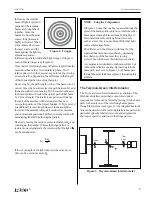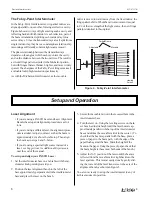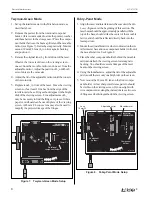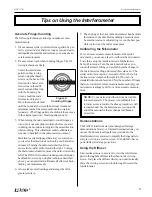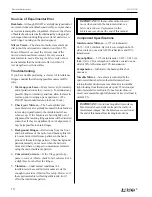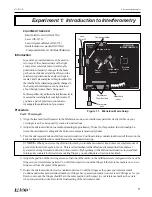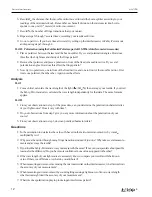
Precision Interferometer
012-07137B
16
®
Data Analysis
In principle, the method for calculating the index of refraction is relatively simple. The light passes
through a greater length of glass as the plate is rotated. The general steps for measuring the index of
refraction in such a case is as follows:
1. Determine the change in the path length of the light beam as the glass plate is rotated. Determine how
much of the change in path length is through glass,
d
g
(
θθθθθ
), and how much is through air,
d
a
(
θθθθθ
).
2. Relate the change in path length to your measured fringe transitions with the following equation:
where
n
a
= the index of refraction of air (see Experiment 2),
n
g
= the index of refraction of the glass
plate (as yet unknown),
λλλλλ
0
= the wavelength of your light source in vacuum, and
N
= the number of
fringe transitions that you counted.
Carrying out this analysis for the glass plate is rather complicated, so we'll leave you with the equation
shown below for calculating the index of refraction based on your measurements. Nevertheless, we
encourage you to attempt the analysis for yourself. It will greatly increase your understanding of the
measurement and also of the complications inherent in the analysis.
where
t
= the thickness of the glass plate.
➤
NOTE:
Our thanks to Prof. Ernest Henninger, DePauw University, for providing this equation
from
Light Principles and Measurements,
by Monk, McGraw-Hill, 1937.
2n
a
d
a
(
θ
) + 2n
g
d
g
(
θ
)
λ
0
(2t – N
λ
0
)(1 – cos
θ
)
2t(1 – cos
θ
) –
N
λ
0




